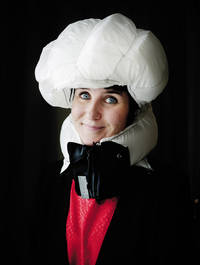DIY tests to detect malaria, sleeping sickness
– Published 17 October 2013

A new simple and affordable method of detecting early malaria, sleeping sickness and even certain types of cancer and bacterial diseases at an early stage is being developed in a consortium with Lund University in the lead. A grant of EUR 4.2 million from the EU has been received to finalise the ‘lab-on-a-chip’ technique.
“We have found a way to sort particles based on their shape or softness. The idea is quite different from current methods”, said Jonas Tegenfeldt, a Reader in Solid State Physics at Lund University, Sweden, and the initiator of the project, which now involves 15 universities, companies, clinics and NGOs in Europe and Africa.
For health care workers in Africa and other parts of the world where tropical diseases are rife, this would come as welcome news. At present, blood samples are put through many expensive machines that the majority of hospitals do not even have. This method makes it possible to put a drop of blood on a chip that is designed so that the parasites gather in one area and are therefore easier to detect. The next step may use a mobile phone, something that is common in Africa. For example, using a simple mobile phone microscope developed at the University of California, a picture is taken that is then sent to the nearest large hospital for analysis.
The technology means that it is not necessary for patients to travel to hospital. Instead, a health worker can bring the equipment and take a sample in the patient’s home.
Diseases can also be diagnosed at an early stage, since few particles are needed for them to be detected.
“In the end, we will have a simple and cheap solution, but a lot of work is still needed to reach that point”, said Jonas Tegenfeldt.
In the project, the researchers will also try to capture bacteria and circulating cancer cells that may cause metastases.
“Cancer cells tend to be softer than healthy cells. Today, antibodies are used that bind to the markers that are found on certain cancer cells, but far from all types of cancer cells can be traced in this way”, said Jonas Tegenfeldt.
Prototype devices designed for parasites, bacteria and cancer cells are expected to be available at the end of the four-year project.
Project participants
The project offers openings for fifteen new doctoral and post-doctoral positions in medicine, physics and engineering, three of which are based at Lund University. A complete list of the project participants as well as additional information can be found on the website.
How the technology works
One of the technologies that will be used in the project is based on a sorting principle known as “deterministic lateral displacement” that was conceived at Princeton University around ten years ago. It is a very powerful method that sorts with high precision. However, the method only sorts by size, which limits its practical applications. In order to detect diseases, it is a major advantage to have more variables than just size, and the group of Jonas Tegenfeldt has further developed the technique to sort based on shape and softness.
“If a plate-shaped particle is made to lie flat against the pillar it is sorted by thickness, and if it lies flat against the floor it is sorted by diameter”, explained Jonas Tegenfeldt.
With regard to softness, the technology utilises the fact that particles become deformed as they move in the liquid between the pillars. They are deformed more at high speeds than at low speeds, which means that a soft particle changes its effective size when the speed is increased, whereas a hard particle does not.
The silicon rubber chip, the size of a credit card, contains long pillars (one tenth of the diameter of a strand of hair) that sieve the blood. Although the chip is very simple, for the design process a deep knowledge of the basic physics of how liquids flow and how particles move in liquids is important. The device is laid out such that the small parasitic worms that cause sleeping sickness, or whatever it is doctors want to detect, are guided into a microscopic container where they are trapped. Once they are gathered into one place, it is quite easy to identify them by inspection. The other constituents of blood – plasma, and the red and white blood cells – have different sizes and shapes and are therefore steered to other parts of the chip.
